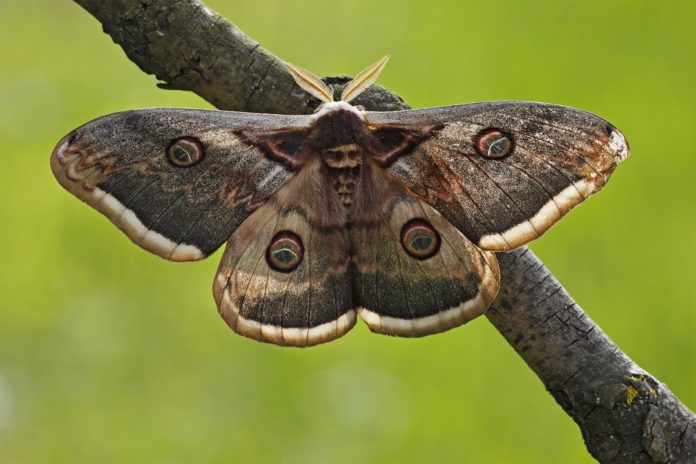Darwin’s theory of evolution states that all species of organisms arise and develop through the natural selection of small, inherited variations that increase the individual’s ability to compete, survive, and reproduce. ‘Industrial melanism’, the prevalence of darker varieties of animals in polluted areas – and the peppered moth provided a crucial early example by supporting this theory.
The case has been very much upheld by numerous investigations, however, no one had ever tested how well camouflaged the moths were to the vision of their key predators – birds – and how their disguise straightforwardly affected survival.
Thus, scientists at the University of Exeter have revisited the theory – and confirmed that the vision of birds, pale moths are indeed more camouflaged against lichen-covered trees than dark moths. This makes pale moths less likely to be eaten by birds in unpolluted woodland and giving them an evolutionary advantage.
Professor Martin Stevens of the Centre for Ecology and Conservation on the University of Exeter’s Penryn Campus in Cornwall, said, “This is one of the most iconic examples of evolution, used in biology textbooks around the world, yet fiercely attacked by creationists seeking to discredit evolution. Using digital image analysis to simulate bird vision and field experiments in British woodland, we compared how easily birds can see pale and darker moths, and ultimately determine their predation risk.”
“Our findings confirm the conventional story put forward by early evolutionary biologists – that changes in the frequency of dark and pale peppered moths were driven by changes in pollution and camouflage.”
Most of the birds can recognize ultraviolet light and see a greater range of colors than humans. Scientists here examined how well pale and dark moths matched lichen-covered and plain tree bark.
They used museum specimens including some from the collections of Bernard Kettlewell. Moreover, they created artificial moths bedeviled them with food and observed predation rates in UK forest, for the most part in Cornwall. They discovered that lighter models had a 21% higher chance of “surviving”.
First author Olivia Walton said, “Through a bird’s eyes, the pale peppered moths more closely match lichen-covered bark, whereas darker individuals more closely match plain bark. Crucially, this translates into a strong survival advantage; the lighter moths are much less likely to be seen by wild birds when on lichen-covered backgrounds, in comparison to dark moths.”
Professor Stevens said, “We provide strong direct evidence that the frequency of the peppered moth forms stems from differences in camouflage and avian predation, providing key support for this iconic example of natural selection.”
The paper is published in the journal Communications Biology.
